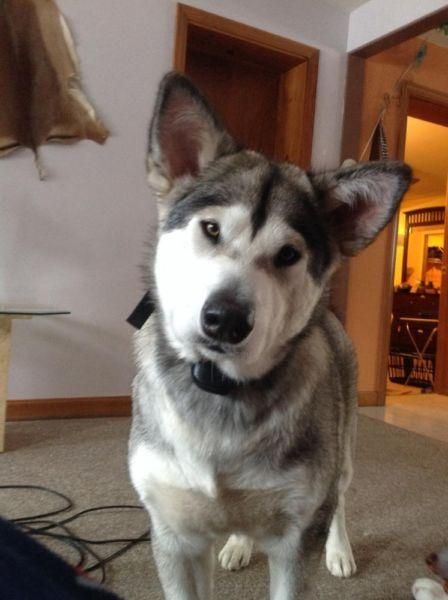At What Age Does A Husky Loose The Puppy Fur

A Pomeranian’s thick double-coat of fur is one of their most defining features. Ideally, it will be tightly packed, thick, strong, and soft to the touch. But a Pomeranian’s fur may not always look or feel perfect; there are times when it may appear sparse or have trouble growing. And the coat may have poor texture, looking dry and dull.
At what age does a husky loose the puppy fur. Your Husky puppy will start to lose their first teeth around three months of age and continue until they are a little over six months. In this time, you will notice that your Husky puppy is chewing on almost anything and everything.. if you will brush them more often, it will help keep the fur off your floor. A Husky is a breed that can. Puppy fur may be long or short, although it is typically shorter than the dog’s adult coat. The Uglies. Puppies do eventually shed their baby fur, although this happens at a different age for every dog. Some puppies may start shedding their baby coat as young as 12 weeks, while others may not fully shed the fuzz until they are almost a year. A puppy is born with one single coat of soft fur, even if it is a double-coated breed. When he sheds that puppy coat, his new, adult coat will come in stiffer and thicker, according to the American Kennel Club. The double-coated dog will grow two layers of fur after shedding the puppy coat. The puppy's coat pattern and texture may also change. The secondary hairs then start emerging around the age of 12 weeks. In the case of a double-coated pup, he'll technically end up with two coats of fur: the undercoat and the overcoat. Luckily, the adult coat will be fully complete by the time the puppy has reached the age of 10 to 14 months.
Puppies lose their puppy coats between 4-to-6 months of age, although this time frame varies widely from breed to breed and can start at 12 weeks or wait until they’re one year old. Proper nutrition is an important part of your puppy's development. In general, you should continue feeding puppy food (dog food labeled for growth) until your puppy is done growing. Large breed dogs often need to stay on puppy food past their first year, but other dogs can usually start to transition to adult food between nine and 12 months of age. As the puppy fur is gradually replaced with adult fur, you may also see changes in color and pattern. For example, Dalmatian pups are born white, but develop spots as they lose their puppy fur. Some white puppies grow into cream-colored or tan adults, and other pups are born with black fur and grow into brown-coated adults. When the mud dries, it just brushes off the fur. Puppy To Adult Coat. At first, Snow Dog puppies have a soft fuzzy undercoat but no real guard hairs to speak of. But between the ages of 10 and 14 months, Husky puppies will go through a complete shed losing all their of their fuzzy puppy fur. The puppy fuzz is then replaced by their full adult coat.
Reviewed and updated for accuracy on December 10, 2019, by Dr. Jennifer Coates, DVM. There’s enough to think about and keep track of when caring for a puppy—feeding, walking, training, housebreaking (and don’t forget playtime!)—that you might not give their teeth a whole lot of thought. Light shading is found around the face and on the underbelly. If you bring home your pup between 8 and 10 weeks of age, you will enjoy a fluff ball on legs. Take lots of pictures at this stage, because there's nothing cuter than a husky baby! When your dog nears 4 months of age you will notice changes to his behavior and coat. Most puppies lose their puppy coat when they're somewhere around 3 - 10 months old, depending on size, breed and coat type. This sort of puppy hair loss can be more extreme in some breeds than others, Pomeranians are a prime example of this, and may look very 'patchy' for a time. I have a four month old yellow lab who still has her puppy coat. At the moment she really doesn't do much in the way of shedding. Currently her fur is shorter than most labs, but I've heard they can get longer coats after they lose their puppy fur.
A slicker brush and a pin brush must be used on dogs with double-textured fur, such as the husky and Chow Chow. Long-haired dogs like the Shih Tzu, Maltese, Yorkshire terrier and Afghan need to be brushed with slicker and pin brushes, as well as a comb for the final feathering. While the age at which the puppy coat sheds varies by breeds, most puppies lose their original coats by the age of six months. Some breeds — the Pomeranian is an example — may not have their full adult coat come in until the age of 2. By the time, your puppy is about six months old or so, all of his puppy teeth should have fallen out, and his adult teeth should have grown in. In general, adults dogs have about 42 teeth (fun. Husky pups start losing their teeth anywhere between the ages of 3 to 7 months. Their baby teeth roots are replaced by their emerging adult teeth. You will notice your pup losing its incisors when he is about three months of age.



















